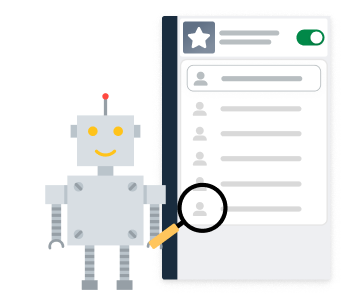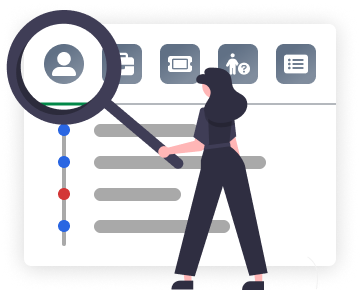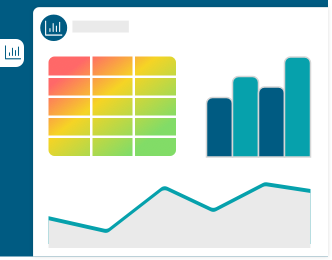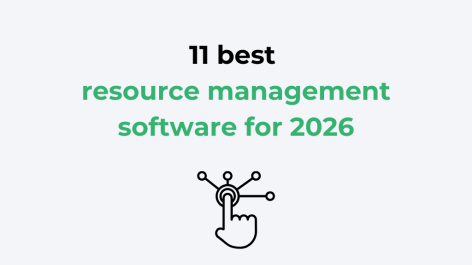The workplace looks very different in 2025. Teams operate across time zones, skills are evolving, and project demands change constantly. Successful team management has adapted to meet this reality.
In this post, we’ll look at actually working in team management right now, based on approaches that deliver measurable results, and how platforms like Retain can make all the difference for team management in 2025.
1. Real-time resource visibility

⚠️ Problem: Managers can't see who's available or properly skilled until it's too late. This lack of visibility creates a constant firefighting mentality, with teams scrambling to plug gaps and meet commitments. Without clear insights into current allocations, managers often overcommit their teams, leading to quality issues and missed deadlines.
✅ Solution: Centralised resource planning platforms, like Retain, provide immediate visibility across all teams, skills, and locations. These platforms offer a single source of truth about who's working on what, who's available, and what skills exist across the organisation. The most effective tools include real-time updates, skill-based search capabilities, and capacity forecasting features that identify potential issues before they impact project delivery.
Practical takeaway: Effective resource visibility tools should show not just who's available, but their technical and behavioural skills, past project experience, and current workload. This information needs to be accessible to all team managers, not locked in departmental silos.
Related reading: Gantt Chart alternative for resource planning
2. Predictive resource intelligence

⚠️ Problem: When resource needs are identified too late, organisations face limited options: delay projects, pay premium rates for contractors, or overload existing staff. This reactive cycle creates unnecessary costs, quality risks, and team stress. Many organisations only discover resource gaps when they're already causing problems, leaving no time for optimal solutions.
✅ Solution: Systems that forecast resource needs weeks and months in advance, giving managers time to develop appropriate solutions. These tools analyse historical data, pipeline information, and team capabilities to predict upcoming demand patterns. The best systems don't just identify potential gaps but suggest specific actions to address them through training, recruitment, or workflow adjustments. This proactive approach transforms resource management from crisis response to strategic planning.
Practical takeaway: Look for systems that explain their recommendations clearly. Good predictive tools don't just flag potential issues—they use AI to suggest specific actions and explain their reasoning.
Related reading: Understanding AI in resource management
3. Dynamic skill profiles
⚠️ Problem: Traditional role descriptions mask the unique combination of skills, experiences, and domain knowledge each person brings to the team. This leads to mismatched assignments where team members work on projects that don't align with their actual capabilities. Without detailed skill visibility, organisations often miss opportunities to leverage their existing talent effectively.
✅ Solution: Detailed skill profiles that track each person's full range of capabilities, project experience, and development interests. These profiles go far beyond basic job titles to create a comprehensive picture of what each team member can contribute. Modern skill systems capture technical abilities, domain expertise, project experience, working methodologies, behavioural skills, and development goals. They're continuously updated to reflect new capabilities gained through project work and formal learning.
Practical takeaway: Update skill profiles after each project to capture new capabilities. The profile should include technical skills, domain expertise, project experience, and working methods to create a complete picture of each person's capabilities.
Related reading: Behavioural skills vs technical skills: why resource planning needs both
4. Outcome-focused metrics
⚠️ Problem: Input-focused tracking (like hours worked) fails to measure what actually matters for project success and team health. Traditional metrics often drive counterproductive behaviours, rewarding long hours rather than effective work. This creates an environment where presenteeism is valued over results, leading to burnout and diminished quality. Many teams still struggle with performance measures that don't align with actual business value or sustainable team performance.
✅ Solution: Metrics that focus on results: project completion rates, client satisfaction scores, and team wellbeing indicators. Effective measurement systems track both what was achieved and how sustainably it was accomplished. Modern teams monitor project outcomes alongside team health indicators to ensure short-term success doesn't come at the expense of long-term capability. These balanced metrics provide a more accurate picture of true performance and help identify improvement opportunities.
Practical takeaway: Include wellbeing metrics in your performance tracking. Regular pulse surveys can identify potential burnout risks early, allowing for workload adjustments before problems develop.
Related reading: The role of data analytics in strategic workforce planning
5. Collaborative assignment models

⚠️ Problem: Top-down assignment models reduce team member engagement and ownership. When people have no input into their project assignments, they often feel like interchangeable resources rather than valued contributors. This decreases motivation and investment in project outcomes. Traditional assignment approaches also fail to consider individual career goals and interests, missing opportunities to align work with personal development paths.
✅ Solution: Collaborative approaches where team members have meaningful input into their project assignments. These models create a more balanced allocation process that considers both business needs and individual preferences. Team members can express interest in projects that align with their skills, personal communication style, and development goals, while managers ensure appropriate staffing for client commitments. This collaborative approach increases engagement while maintaining necessary oversight of resource allocation.
Practical takeaway: Find the right balance for your context. Provide enough choice to boost engagement while maintaining the structure needed to deliver reliably for clients.
Related reading: Dynamic skills-based resource allocation: match talent to the right projects
6. Asynchronous work patterns

⚠️ Problem: Teams spread across time zones struggle with traditional workflows that require simultaneous online presence. The standard approach of synchronous meetings and real-time collaboration creates significant challenges for distributed teams. Some members must attend meetings during personal time, while others experience delays waiting for responses. This creates inequitable working conditions and inefficient processes where work stops waiting for input from colleagues in different time zones.
✅ Solution: Processes designed to progress continuously without everyone being online at the same time. Asynchronous workflows use clear documentation, explicit handoffs, and thoughtful communication practices to maintain momentum regardless of when team members are working. Team management systems track status and dependencies, making them visible to everyone. Teams establish communication norms that specify which matters require immediate attention and which can wait for normal working hours.
Practical takeaway: Create explicit communication guidelines for asynchronous teams. Specify which channels to use for different types of information and establish expected response timeframes for various message priorities.
Related reading: 5 workplace trends every resource manager needs to know
7. Flexible capacity allocation

⚠️ Problem: Rigid project assignments lead to inefficient resource use as project needs evolve. Traditional approaches that allocate people to projects for extended periods at fixed percentages don't adapt well to changing circumstances. When projects hit obstacles or accelerate unexpectedly, fixed allocations create situations where some team members are overloaded while others have capacity. This rigidity wastes valuable resources and creates unnecessary stress points within teams.
✅ Solution: Small, frequent adjustments to resource allocation that respond to changing circumstances. Modern teams review and adjust allocations regularly based on current priorities and progress. Resources shift gradually as needs evolve, preventing both overload and idle time. This flexible approach allows organisations to respond more nimbly to client requests and market changes while maintaining balanced workloads across the team.
Practical takeaway: Build regular capacity reviews into your workflow. Short weekly sessions to fine-tune allocations based on current progress and emerging priorities help keep workloads balanced across the team.
Related reading: Workforce supply and demand 101: calculations, benchmarks & tips
8. Data-driven development paths

⚠️ Problem: Generic career ladders fail to develop each person's unique talents effectively. Traditional development approaches often follow standardised paths that don't account for individual strengths, interests, or learning styles. This one-size-fits-all approach wastes potential by pushing people toward generic roles rather than leveraging their unique capabilities. Many organisations still separate development activities from project work, treating them as distinct rather than integrated processes.
✅ Solution: Personalised development routes based on project analytics, performance data, and individual interests. Forward-thinking teams use insights from completed work to identify growth opportunities tailored to each person. They integrate development directly into project assignments by creating stretch roles that build specific capabilities. This data-driven approach creates growth paths that enhance each person's unique strengths while addressing gaps in capabilities needed for future roles.
Practical takeaway: Track skill acquisition through project work as a key metric. Hands-on experience often delivers more value than formal training programs, so monitor how each person's capabilities grow through project assignments.
Related reading: The role of data analytics in strategic workforce planning
Bringing it all together: the value of modern team management
Effective team management delivers value for both organisations and the people who make them successful. Companies implementing these approaches report significant improvements in key business metrics:
▪️ Faster project delivery through right-first-time resource allocation
▪️ Higher client satisfaction resulting from better-matched skills
▪️ Improved staff retention and engagement levels
▪️ More agile response to changing market conditions
▪️ Reduced costs through optimized resource utilization
▪️ Accelerated capability development across the team
Beyond these measurable outcomes, modern team management creates more rewarding work environments where people thrive. Team members benefit from assignments that match their skills and interests, sustainable workloads that prevent burnout, and personalised development paths that build valuable capabilities.
Keen to learn more? Book a demo to see how we can help.


